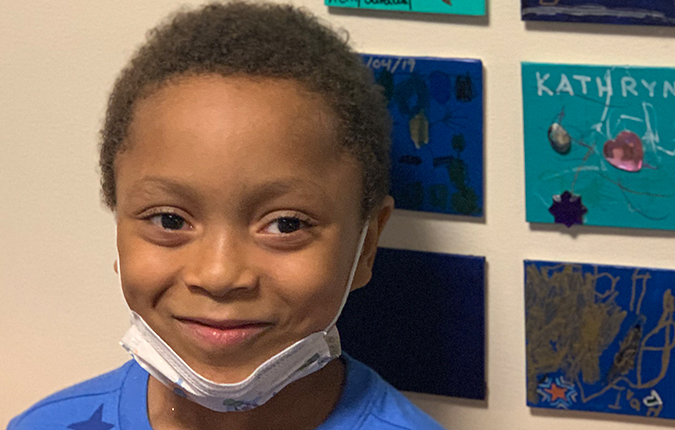
Blood and Marrow Transplantation for Sickle Cell Disease and Beta Thalassemia


A blood and marrow transplant (BMT) can offer a cure for sickle cell disease. It's not a surgical procedure, instead, BMT involves replacing stem cells in the bone marrow with healthy stem cells that can produce normal red blood cells. At Children’s National Hospital, we offer several types of BMT and gene therapy for sickle cell disease and beta thalassemia:
- Matched sibling donor transplant
- Alternative donor transplant including haplo-identical (half-matched) transplant
- Reduced Intensity chemotherapy or non-chemotherapy based transplants
- Gene therapy options, including CASGEVY™ ,LYFGENIA™, and ZYNTEGLO™

Contact Information
For more information about BMT for sickle cell disease and beta thalassemia, please call us.
How Blood and Marrow Transplant Works
This video introduces the basics of blood and marrow transplantation (BMT), including gene therapy, for families with sickle cell disease.

Stem Cell Transplant Timeline
We’ve created a step-by-step guide to help you understand the transplant journey from diagnosis to treatment to long-term care.
Choosing the Children’s National BMT Program
Our program is one of the largest and most experienced centers of its kind. For over 20 years, our team has provided curative transplants for children and adolescents with sickle cell disease. To date, more than 150 patients have received transplants through our renowned program. While our gene therapy program is still growing and has only infused a handful of patients so far, it is rapidly expanding, with collections now occurring at a pace of approximately two patients per month.
A Multidisciplinary Approach to Care
Our patients benefit from a highly specialized team with deep experience in BMT for sickle cell disease. Care is coordinated between our hematologists and transplant specialists with support from experts in:
This team provides comprehensive care before, during and long after transplant. Recognizing the potential impact of transplant on fertility, we also offer fertility preservation services through our pediatric gynecology and urology programs.
Fertility Preservation
Our fertility preservation services include:
- Fertility counseling for patients and families before treatment
- Sperm banking for post-pubertal males
- Oocyte and embryo cryopreservation for post-pubertal females
- Ovarian and testicular tissue cryopreservation for prepubertal patients (when appropriate)
- Coordination with reproductive endocrinology specialists for advanced care
Innovative Research on Transplant for Sickle Cell Disease
Children's National is a leader in advancing curative therapies for sickle cell disease. Our team has published extensively and continues to pioneer new approaches. We currently offer participation in several clinical trials, including:
- Minimizing Toxicity in HLA-identical Related Donor Transplantation for Children with Sickle Cell Disease (SUN)
- Sickle Cell Disease Transplant Using a Nonmyeloablative Approach for Patients With Anti-donor Red Cell AntibodY (SUN-RAY)
- Early Human Leukocyte Antigen (HLA) Matched Sibling Hematopoietic Stem Cell Transplantation
- A Study Evaluating Gene Therapy With BB305 Lentiviral Vector in Sickle Cell Disease
Demier's Story
Demier, born with sickle cell disease, received a cure – a stem cell transplant. "He's had a second chance at life," his mom says. "He does things he could never do before, playing football with his friends, running, going to the pool. Thanks to Children's National Hospital, he's a regular, active and happy kid."







